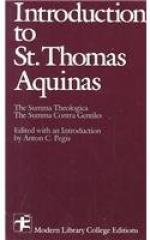
|
| Name: _________________________ | Period: ___________________ |
This test consists of 15 multiple choice questions and 5 short answer questions.
Multiple Choice Questions
1. Aquinas shows that his ideas can be _____.
(a) Odd.
(b) Formed.
(c) Wrong.
(d) Unreasonable.
2. Does truth only exist in the intellect?
(a) Most likely.
(b) No.
(c) Yes.
(d) Probably.
3. God can will for the existence of what?
(a) Pain.
(b) Evil.
(c) Sin.
(d) Opposites and their possibilities.
4. What power must we assign to Him in the highest degree?
(a) Inactive.
(b) Aggressive.
(c) Active.
(d) Passive.
5. What is the trilogy of men of Athens?
(a) Plato, Aristotle, and Diogenes.
(b) Socrates, Plato, and Aristotle.
(c) Socrates, Plato, and Diogenes.
(d) Socrates, Diogenes, and Aristotle.
6. Who had a Christian best friend for many years?
(a) Plato.
(b) Mohammed.
(c) Buddha.
(d) Moses.
7. What power does not exist at all in God?
(a) Aggressive.
(b) Active.
(c) Passive.
(d) Inactive.
8. Truth and falsehood are both described in relation to what?
(a) Sin.
(b) The intellect.
(c) God.
(d) Relationships between men.
9. Angels appear _______________ in many cases.
(a) As crowds.
(b) In small groups.
(c) In large groups.
(d) As individuals.
10. Angels are rather __________.
(a) Simple.
(b) Odd.
(c) Complex.
(d) Unique.
11. What is the format designed to suit?
(a) Debate and logical argumentation.
(b) Those who study theology.
(c) An educational setting.
(d) Those interested in philosophy.
12. Aquinas was a learned man of what?
(a) The Greek government.
(b) The Muslim faith.
(c) The Catholic Church.
(d) The Jewish faith.
13. What is entropy, according to Aquinas?
(a) Disorder.
(b) Order.
(c) The loss of information.
(d) The Creator can reduce a being to nothing.
14. In Question II, The Existence of God, how many articles does Aquinas cover the self-evidence of God, addresses difficulties posed by conditions that cannot be demonstrated, and demonstrable proof of God's existence?
(a) Four.
(b) Three.
(c) Two.
(d) Eight.
15. Aquinas supports God as self-evident but again shows his existence through _________________.
(a) Grace.
(b) Faith.
(c) Analogies.
(d) Demonstration.
Short Answer Questions
1. What are you doing when you behave in a way that does not express the truth?
2. What is equally much an element of soul, and in this manner the life-giving breath of God is included?
3. God's power dwells throughout every one of what?
4. What is meant by an article?
5. Whose will does Aquinas believe should always be fulfilled?
|
This section contains 362 words (approx. 2 pages at 300 words per page) |

|




